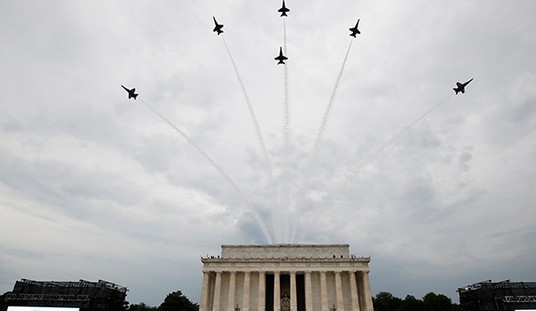McClatchy reports that Barack Obama made his decision last night on Afghanistan, and has decided on a number between McChrystal’s medium- and high-risk plans. Instead of 40,000 or 20,000, Obama will send an additional 34,000 troops to bolster the NATO forces and employ the counterinsurgency strategy that he publicly demanded for two years and made official US policy in March. However, McClatchy also reports that Obama won’t announce the new numbers until next week:
President Barack Obama met Monday evening with his national security team to finalize a plan to dispatch some 34,000 additional U.S. troops over the next year to what he’s called “a war of necessity” in Afghanistan, U.S. officials told McClatchy.
Obama is expected to announce his long-awaited decision on Dec. 1, followed by meetings on Capitol Hill aimed at winning congressional support amid opposition by some Democrats who are worried about the strain on the U.S. Treasury and whether Afghanistan has become a quagmire, the officials said.
The U.S. officials all spoke on condition of anonymity because they weren’t authorized to discuss the issue publicly and because, one official said, the White House is incensed by leaks on its Afghanistan policy that didn’t originate in the White House.
Perhaps part of their reluctance would also be that Obama threatened to fire anyone who leaked information about his decision. The comment about “not originating in the White House” seems odd, too. Did the White House want to pin the leaks on the Pentagon? Sourcing these as “US officials” makes it as generic as possible; that term could apply to an EPA clerk.
The new plan contains the “off-ramps” Obama demanded from his national security team. Those begin to arrive as early as June, according to McClatchy, giving the US a few easy outs if Obama chooses to retreat. If the “political side” or the war itself doesn’t improve, Obama apparently wants to get out altogether. In other words, this looks like McChrystal’s last stand. Next week, McChrystal will return to DC in order to help Obama roll this out, where Obama will almost certainly get significant pushback from Democrats in Congress over the cost and the need to keep fighting.
The increase in troops is a good decision, but the off-ramps almost completely undermine it. The point in extending our footprint is to win the trust of the local communities and prove our reliability in providing them security, which is the central thrust of McChrystal’s COIN strategy. By getting them to trust our commitment, we can get them to help fight the Taliban themselves, as we did with the Anbar Awakening in Iraq against al-Qaeda, and greatly improve the intel we get from the locals. If we send 34,000 more troops but give ourselves a six-month time frame for success or bug-out, the locals will very quickly come to the realization that allying with us will be suicide. The COIN strategy only worked in Iraq because George W. Bush was adamant that we would stay until we won.
A Commander in Chief doesn’t need “off-ramps.” Any President can call an end to a deployment based on his own judgment. Putting these conditions into the American strategy signals weakness — a desire to pull out without getting blamed for the decision. Obama wants to be off the hook for an eventual withdrawal by claiming that he’s forced to do it because of these benchmark failures. And if Obama’s that keen to retreat, he should just do it now.








Join the conversation as a VIP Member